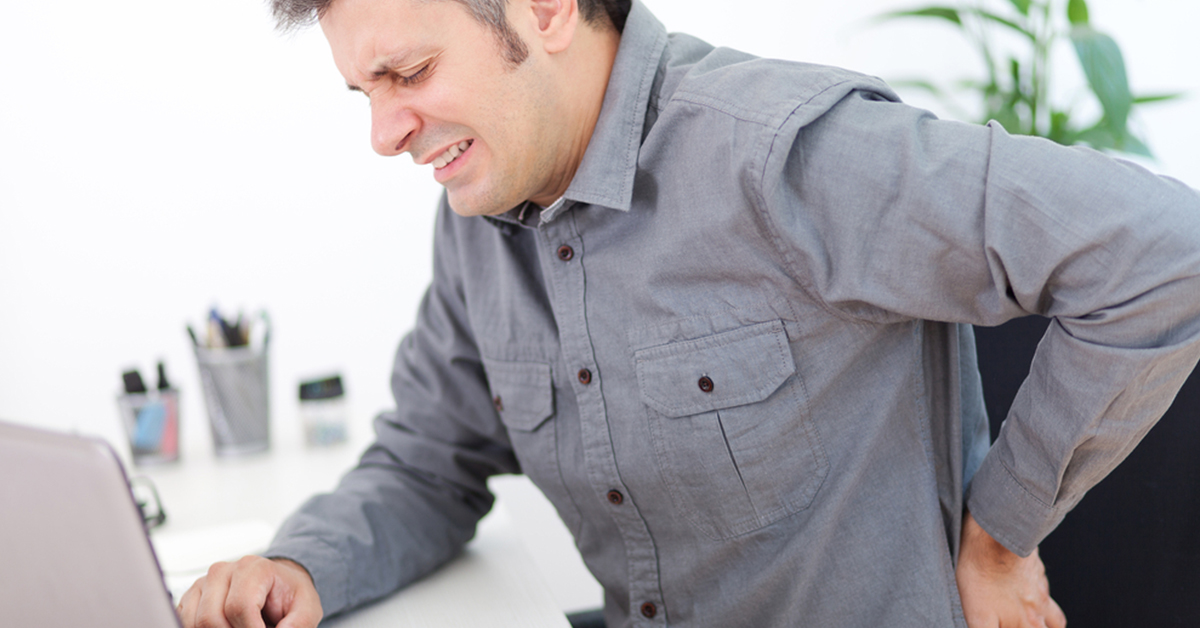
My Back Hurts: Is it my posture?
The spine is a very interesting and important musculoskeletal structure. It stabilizes the body, protects the spinal cord, and determines posture. When the muscles, ligaments, and bones of the spine are healthy and anatomical, the spine rests in a neutral position. Patients who have a neutral spine are said to have good posture.
Posture Deviations
Patients who have a spine that deviates from a neutral position are said to have a posture deviation. Initially, a minor posture deviation may cause little to no pain; however, a posture deviation that remains uncorrected for an extended period of time may become worse and produce pain. Usually, a posture deviation puts an excessive amount of stress and strain on the spinal ligaments and tendons, which may lead to any of the following injuries/conditions:
- A ligament sprain
- A tendon strain
- Muscle spasms, fatigue, and/or weakness
Pain that ranges from mild to severe typically accompanies these injuries/conditions. The pain relief provided by rest and medications is usually temporary if a posture deviation is the cause of the pain. To determine if your pain is being caused by a posture deviation, look for the following key signs:
- Pain that worsens as the day progresses
- Pain that starts at the neck and moves down the spine
- Pain that goes away when you change positions
- Pain that suddenly occurs when you change positions or perform a new task
Once a posture deviation is suspected as the cause of your pain, you can use a mirror to check and see if you have one or more of the common posture deviations listed below.
Common Posture Deviation 1: A Hunchback or Round Back
The thoracic region of the spine consists of twelve vertebrae (T1-T12). An anatomical thoracic spine has an outward curve. Patients who display a greater than normal curve are said to have a hunchback or a round back. The most common cause of this condition is poor posture. Sings that indicate the condition is present include the following:
- Rounded shoulders
- Mid-back pain
- Mid-back weakness
- Back spasms
- Stiffness
- A visible hump/hunch
In many cases, a hunchback can be easily corrected by paying close attention to your posture and correcting it when you slouch or lean over. Avoiding activities that require leaning or hunching over for a long period of time is also recommended.
Common Posture Deviation 2: Anterior Pelvic Tilt
The lumbar or lower back region of the spine consists of five vertebrae (L1-L5). The pelvis is a bony structure that rests below the lumbar spine. Anterior pelvic tilt occurs when the pelvis tilts too far forward. The most noticeable sign of anterior pelvic tilt is an arch in the lower back. Lower back pain, weakness, and stiffness are usually associated the condition. Key activities that patients with the condition should avoid include the following:
- Sitting at a computer or desk for more than 1-2 hours without getting up
- Spending a prolonged period of time on a mobile or tablet device
To correct the condition, patients are advised to start a physical therapy program geared toward stretching and strengthening the abs, core, hips, glutes, and hamstrings.
Seeking Treatment
Back pain that does not go away after simple postural corrections are made needs to be seen by an orthopedic spine specialist. If a posture deviation is found to be the cause of pain, a specialist can work with you to create the perfect treatment solution. In many cases, a referral to a physical therapist who specializes in posture deviations will be part of the treatment plan. When you are ready to make an appointment with one of our orthopedic spine specialists, please contact our office today.


